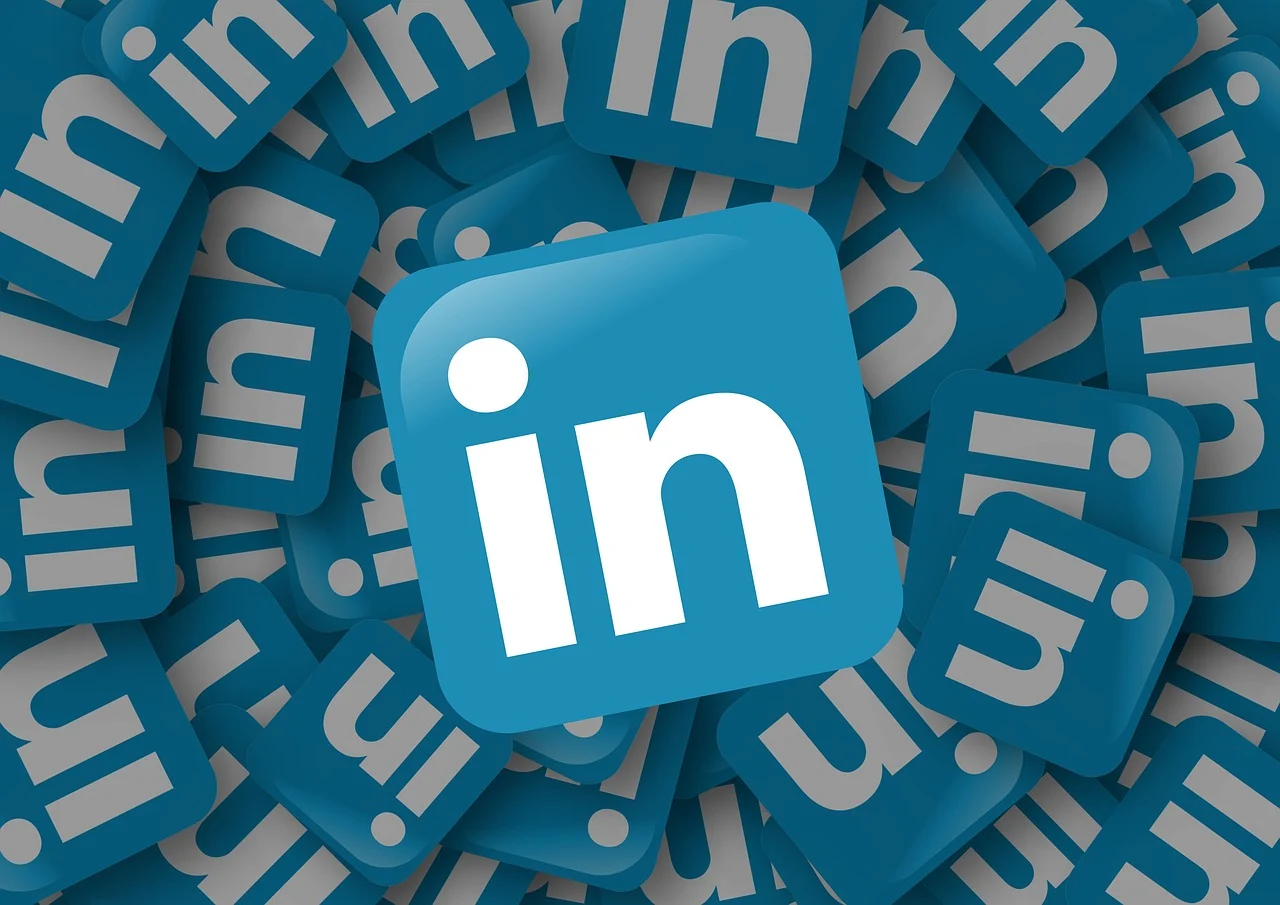Using LinkedIn for college admissions is a smart way to highlight your achievements, build connections, and show initiative to admissions officers. A well-crafted profile can strengthen your application and set you apart. Whether you’re just starting high school or preparing your final application, LinkedIn can help you tell your story, connect with the right people, and explore schools and programs that align with your goals.
In this article, we’ll walk you through how to create and optimize your LinkedIn profile as a student – including best practices, examples, and tips to avoid common mistakes – so you can use it as a valuable tool in your college admissions strategy.
LinkedIn’s Growing Role in College Admissions
In a world where digital presence matters, LinkedIn is quietly becoming a secret weapon for college-bound students. While your academics and essays are still at the heart of your application, admissions officers are seeking out a well-rounded, holistic view. And that includes what shows up when they Google your name, whether that’s good or potentially embarrassing. A professional LinkedIn profile can offer a richer, more complete view of who you are beyond test scores and extracurricular checkboxes.
By using LinkedIn as a college applicant, you can:
- Show initiative and professionalism in a format that’s rare for high school students
- Highlight long-term interests and leadership across multiple activities or roles
- Build connections with alumni, mentors, and others who can help guide your path
- Support your application with visible, verifiable achievements and engagement
Whether you’re applying to competitive universities or exploring specialized programs, a thoughtful LinkedIn profile can be a quiet but compelling asset.
Why Build a LinkedIn Profile Before College?
High school students rarely think about LinkedIn, which is exactly why having one makes you stand out. Creating a profile now shows foresight, maturity, and digital fluency. It tells admissions teams (and future employers) that you’re already thinking about your growth beyond the next four years. And more than that, it gives you a flexible platform to tell your story in a professional tone, on your own terms.
Here’s what a strong high school LinkedIn profile can do:
- Showcase independent projects – Whether you launched a podcast, coded an app, or started a growing club, you can spotlight the details in ways that go beyond the space you have within the Common App.
- Clarify trajectory – Link your part-time job or summer program to your future goals, showing a sense of purpose.
- Highlight initiative – Admissions officers appreciate students who go beyond the checklist. A polished LinkedIn sends that message.
- Add credibility – Endorsements, certificates, and media links show you’re invested, involved, and already looking toward the future.
If you’re applying to programs that value leadership, initiative, or professional development (think business, engineering, public service), LinkedIn can be a powerful way to reinforce your fit.
How to Set Up and Optimize Your LinkedIn Profile
Creating a LinkedIn profile is easy. Making it great takes time and effort. Here’s how to set up and optimize your presence to make a strong impression without overdoing it:
1. Start with a Clean, Friendly Profile Photo
- Use a clear, high-resolution headshot with a neutral or tidy background.
- Dress smart-casual and smile – think “student leader,” not “passport photo.”
2. Add a Headline That Reflects Your Interests
Skip the generic “Student at X High School.” Try:
- “Aspiring Biomedical Engineer | FIRST Robotics Team Lead”
- “High School Junior Exploring Environmental Policy & Climate Tech”
3. Write a Brief but Engaging ‘About’ Section
Use 3–5 sentences to capture your academic interests, goals, and values.
Focus on what drives you, for example:
“I’m a high school senior passionate about public health and equity. I’ve interned at a local clinic, led our school’s mental health awareness week, and hope to study Health Policy & Management. I’m always looking to learn from people who care about systems change.”
4. Fill in the Experience Section Creatively
Think beyond jobs. Include:
- Summer programs
- Internships
- Personal projects
- Volunteer work
- Extracurricular leadership
Briefly describe your role, your impact, and what you learned.
5. Add Education, Skills & Certifications
- List your high school, GPA (if strong), and key academic awards.
- Add skills like “Public Speaking,” “Python,” or “Creative Writing.”
- Include certificates from online courses (Coursera, Khan Academy, etc.).
6. Include Media, Links, or Projects
- Got a short film? Science fair poster? Debate competition reel?
- Use the “Featured” section or link directly in your experience descriptions.
Connecting with Alumni and Admissions Professionals
One of LinkedIn’s most underrated features for college-bound students is its power to facilitate meaningful, professional connections. Admissions teams often say: “We’re building a community, not just filling seats.”
Engaging with people or specific groups from your target schools shows initiative and genuine interest. Reaching out can help you:
- Gain insider perspectives on programs and campus life
- Get tips on crafting a standout application
- Learn about opportunities you won’t find on a school website
- Expand your academic and professional network early
Who to Connect With
Start with:
- Current students and recent grads from your target schools with whom you have common interests
- Admissions officers or regional representatives
- Professors or department heads in your intended field
- Club leaders or student organizations you’re curious about
To find relevant people to connect with, use LinkedIn’s search filters, for example filter by school, location, graduation year etc.
How to Reach Out (Without Being Awkward)
When sending a LinkedIn connection request, keep it short, specific, and polite:
Hi [Name],
I’m a high school junior exploring [School Name] and interested in [Your Area of Study/Club/Program]. I saw you’re involved in [relevant detail] and would love to hear what your experience has been like. Would you be open to a quick message or call sometime this month?
Don’t worry if some don’t reply. Even a few helpful conversations can give you greater insight that can help you stand out in the admissions process.
Using LinkedIn to Research Colleges and Programs
LinkedIn is a powerful research tool that can help you make more informed choices about where to apply and what to study. Every university has a dedicated LinkedIn page, and following them gives you access to school updates, news, admissions insights, and alumni highlights.
The real goldmine is the “Alumni” tab. This feature allows you to explore real-world outcomes by filtering alumni based on:
- What they studied (majors and programs)
- Where they work
- What they’ve done with their degree (career paths)
It’s a fast and insightful way to see how your interests might translate into professional opportunities after graduation, offering a preview of life on the other side of your degree. You can also dive deeper into specific programs. Many graduate and undergraduate departments have individual pages or highlight faculty profiles. These often include details about:
- Unique course offerings
- Ongoing research or student projects
- Professors whose interests align with yours (great for potential outreach)
If you’re choosing between multiple colleges, LinkedIn makes it easy to compare career outcomes, top employers, and the geographic spread of alumni. You can even get a feel for a program’s industry reputation based on where its graduates land.
All this means that LinkedIn lets you do a “career audit” before you’ve even submitted your application – helping you connect the dots between what you study and where it might take you.
Common Pitfalls to Avoid
While LinkedIn can be a valuable part of your college admissions strategy, it’s easy to misuse or overlook its potential. Watch out for these common mistakes:
Treating LinkedIn Like Instagram
LinkedIn is a professional platform. Overly casual posts, flashy bios, or personal updates that belong on other social media sites won’t serve you well. Keep your tone polished and purpose-driven.
Ignoring Your Profile Photo
A blurry selfie or cartoon avatar can signal you’re not taking your profile seriously. Choose a clear, friendly headshot with good lighting and a simple background – think approachable, not corporate.
Leaving Sections Blank
Every blank field is a missed opportunity. Take the time to complete your:
- Headline (e.g., “Aspiring Business Major | Class of 2026”)
- About section (a short, enthusiastic summary of your interests)
- Experience and Education (yes, even clubs, internships, or summer programs)
Overhyping Your Achievements
You want to be impressive, not exaggerated. Admissions officers can spot fluff. Instead of saying you “led multiple international initiatives,” say you “organized a school-wide fundraiser supporting UNICEF” – and show the impact.
Not Keeping It Updated
A profile you created freshman year won’t reflect your growth by senior year. Set a reminder to review your profile every few months as your activities evolve.
Conclusion: LinkedIn as a College Admissions Tool
LinkedIn may not be the first platform that comes to mind when applying to college – but that’s exactly why it can help you stand out. With a thoughtful profile, meaningful connections, and smart use of the platform’s research tools, you can present a more complete and compelling version of yourself to admissions officers and beyond.
The key is to be authentic and intentional. Whether you’re showcasing your leadership experience, following your dream school, or reaching out to alumni, treat LinkedIn as a living portfolio of who you are and where you’re going. Colleges aren’t searching for people with curiosity, initiative, and drive. A strong LinkedIn presence shows you’re already thinking like a future leader.
Want help building your profile for college admissions? Reach out to us today for a free consultation.



